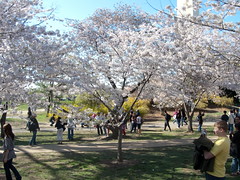What is Black Cherry Hardwood Flooring?
Botanical Name: Prunus Serotina American Cherry, also known as Black Cherry is a common hardwood floor choice for many homes. While it is not as popular as other species such as oak or maple, it is a beautiful hardwood that adds a warm touch to any décor. It is also referred to as: North American Cherry, Black Cherry, Wild Cherry, Whiskey Cherry, Rum Cherry, and Black Chokecherry.
Fast Facts
Color: The color depends on whether heartwood or sapwood is used. Heartwood will have a dark reddish brown appearance, whereas sapwood will have a much lighter color with a pinkish undertone. For a more uniform color, there are some manufacturers who will bleed the darker color onto the sapwood. The color will darken with age.
Grain: The grain will vary depending on how the wood is sawn, but for true quarter sawn wood, there is a unique grain present on the wood. Black cherry presents with a uniform grain texture, which is fine and wavy.
Variations within Species and Grades: Black Cherry is a species which presents with potentially significant color variations in boards.
Hardness/Janka: : Black Cherry is about 26% softer than a Northern Red Oak wood, with a rating of 950 on the Janka Hardness Scale.
Dimensional Stability: American Cherry has a dimensional stability of 7.1, an average of 17% higher than Red Oak. Once the wood is dry, there is little chance it will warp or move.
Sawing/Machining: No known problems.
Sanding: Installers should use a specific sanding sequence to ensure the floor turns out correctly. There are no known problems if this sequence is followed as directed.
Nailing: No known problems.
Finishing: No known problems. When it is being installed in a home, the dust may cause an allergic reaction.
Availability: Readily available. Credit: NWFA
A Brief History of Black Cherry
The cherry tree is common throughout North America. Early American Colonists used the fruit and tree bark to create furniture, medicines, and even cocktails. Early print makers used cherry to create their engraving blocks.
Durability
Cherry is not as durable as other woods that are commonly used for flooring, but it is much less likely to warp and move around than those woods. It ranks on the Janka Scale at a 950, making it much softer than many other hardwoods used for flooring. As the Janka scale only serves as an indication of how well a floor will hold up to normal wear and tear, and it really depends on how well the floor is cared for, cherry can be just as durable as many other species if properly maintained. It is recommended for residential applications only, though, because the commercial industries are too heavily trafficked.
Workability
American Cherry is easy to work with and used in a wide variety of applications. There are no known issues with being able to nail the flooring together or finish it after it is installed in a home. It can be sanded without issue if a certain sequence is followed. If the sequence is not followed correctly, there may be issues when trying to finish the floor.
Where to use
North American Cherry can be used in any residential setting where the dark color will compliment the decor. It is not recommended for use in a commercial setting due to the softness of the wood. It is commonly used for furniture pieces. It is also used to make kitchen cabinets, paneling, doors, and boat interiors.
Care and Maintenance
The care and maintenance of the floor depends highly on the finish used to protect it, rather than the wood itself. As North American Cherry wood will darken faster when exposed to light, it is recommended to keep direct sunlight off the floor; however, the darkening will still occur without exposure to sunlight. Follow the care and maintenance directions suggested by the finish manufacturer, with preventive measures such as rugs and mats to protect the surface. Do not use water to clean a penetrating finish, and avoid using water on a surface finish. Using a dust cloth mop or sweeper will keep debris from scratching the surface. Since cherry is not known for warping and moving, it is more resistant to water damage than other species of wood.
Environmental Issues
Black Cherry is not abundant in North America, as many trees are grown and harvested each year. While it takes a while for the Cherry tree to harvest to the optimal age for flooring and milling, many places are reclaiming cherry wood, allowing it to be reused. When it is reclaimed, it can be hand scraped and refinished to create a unique look and beautiful floor. In terms of relative abundance when compared to other species of wood, about 3.9% of the wood is American Cherry.

